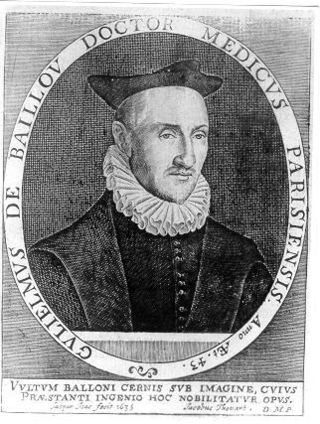Related Research Articles

Jean Maurice Eugène Clément Cocteau was a French poet, playwright, novelist, designer, film director, visual artist and critic. He was one of the foremost avant-garde artists of the 20th-century and hugely influential on the surrealist and Dadaist movements, among others. The National Observer suggested that, "of the artistic generation whose daring gave birth to Twentieth Century Art, Cocteau came closest to being a Renaissance man."

Year 1558 (MDLVIII) was a common year starting on Saturday of the Julian calendar.
Year 1497 (MCDXCVII) was a common year starting on Sunday of the Julian calendar.

Jean Genet was a French novelist, playwright, poet, essayist, and political activist. In his early life he was a vagabond and petty criminal, but he later became a writer and playwright. His major works include the novels The Thief's Journal and Our Lady of the Flowers and the plays The Balcony, The Maids and The Screens.
This article contains information about the literary events and publications of 1528.

Jean François Fernel was a French physician who introduced the term "physiology" to describe the study of the body's function. He was the first person to describe the spinal canal. The lunar crater Fernelius is named after him.
Neurophysiology is a branch of physiology and neuroscience concerned with the functions of the nervous system and their mechanisms. The term neurophysiology originates from the Greek word νεῦρον ("nerve") and physiology. Neurophysiology has applications in the prevention, diagnosis, and treatment of many neurological and psychiatric diseases. Neurophysiological techniques are also used by clinical neurophysiologists to diagnose and monitor patients with neurological diseases.

Fernelius is a lunar impact crater located in the southern highlands just to the north of the walled plain Stöfler. It was named after 16th century French astronomer Jean Fernel. The crater Kaiser is located next to the northwest rim of Fernelius. To the north-northwest are the craters Nonius and Walther. Southeast of Fernelius is the crater cluster of Miller, Nasireddin, Huggins, and Orontius.

Arc measurement, sometimes called degree measurement, is the astrogeodetic technique of determining the radius of Earth and, by extension, its circumference. More specifically, it seeks to determine the local Earth radius of curvature of the figure of the Earth, by relating the latitude difference and the geographic distance surveyed between two locations on Earth's surface. The most common variant involves only astronomical latitudes and the meridian arc length and is called meridian arc measurement; other variants may involve only astronomical longitude or both geographic coordinates . Arc measurement campaigns in Europe were the precursors to the International Association of Geodesy (IAG). Nowadays, the method is replaced by worldwide geodetic networks and by satellite geodesy.
The Dictionary of Canadian Biography is a dictionary of biographical entries for individuals who have contributed to the history of Canada. The DCB, which was initiated in 1959, is a collaboration between the University of Toronto and Laval University. Fifteen volumes have so far been published with more than 8,400 biographies of individuals who died or whose last known activity fell between the years 1000 and 1930. The entire print edition is online, along with some additional biographies to the year 2000.
An astral spirit is a term used in spiritualism and holism and can be described as having a demonic influence and existing in space with no physical body. The Astral Spirit exists in what is called the Astral Plane. Depending on the time period and culture, the term can have several meanings. It was thought to be one of the three parts of the human soul that contained the "thoughts, cogitations, desires, imaginations that were impressed upon the mind at the time of death" as well as lust and anger. Philosopher's had different viewpoints and ideas of the Astral Spirits as Marsilio Ficino considered it to be a link between the physical body and soul, while others such as Jean Fernel associated it more with animal spirits. Philosopher Henry More introduced the term into the medical setting and considered the astral spirit to be a part of the body that was separate from the "rational soul" and viewed it as the "seat of impulses". He believed that man was responsible still for controlling these impulses and enthusiasm. Astral spirits have also been associated with spirit and witchcraft, specifically black magic, and was considered to be demonic in origin at one point. The term was also used in relation to the concept of ghosts and vampirism in the nineteenth century.

Montdidier is a commune in the Somme department in the administrative region of Hauts-de-France, northern France.
Johannes Zacharias Actuarius, son of Zacharias, was a Byzantine physician in Constantinople. He is given the title of Actuarius, a dignity frequently conferred at that court upon physicians.

Guillaume de Baillou (1538–1616) was a French physician born in Paris. He was a member of the Baillou family, one of the oldest aristocratic families in Europe.

Unión Tarapoto is a Peruvian football club that plays in the city of Tarapoto, San Martín, Peru.
The year 1528 in science and technology included a number of events, some of which are listed here.
The year 1558 in science and technology included a number of events, some of which are listed here.
The First Expedition of Blida took place from 22 to 24 July 1830, during the French conquest of Algeria.

Events from the year 1558 in France
Jacques Gohory was a French aristocrat, writer, translator and occult philosopher. He also went by the Latinized form Jacobus Gohorius, the pseudonyms Orlande de Suave, Leo Suavius, Leo Suavis Solitarius and the initials J.G.P.
References
- ↑ "Jean François Fernel Biography". Encyclopedia of World Biography. Retrieved 2011-10-28.